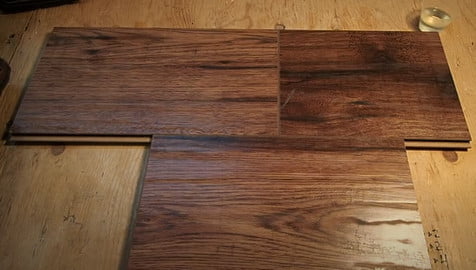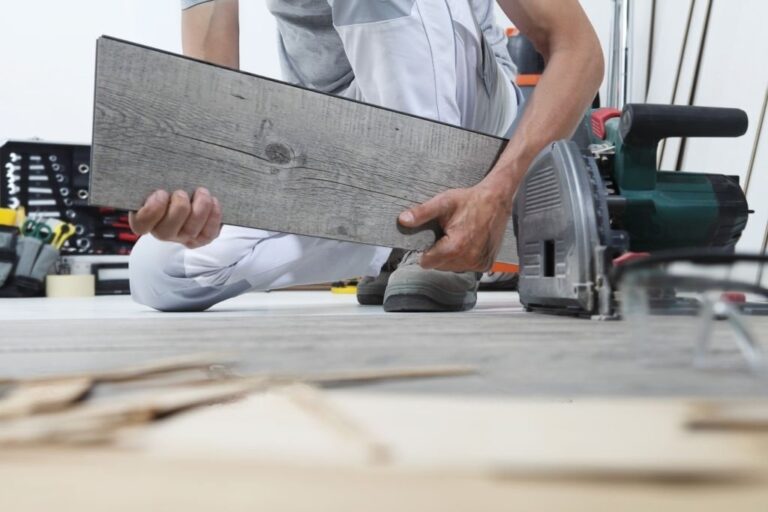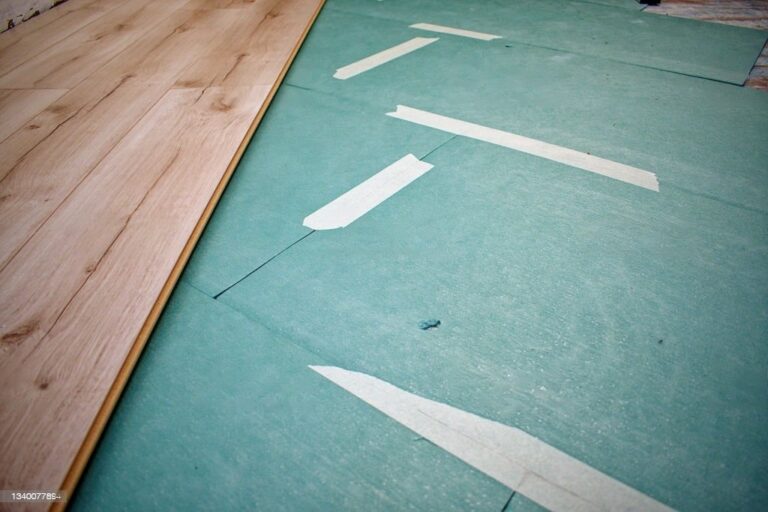Can you seal laminate flooring?
Laminate floors are a popular alternative to hardwood floors due to their affordability and variety of styles. Sealing laminate floors can help protect them from water damage and extend their longevity. However, the process of sealing laminate floors comes with pros and cons that homeowners should consider before deciding to seal their floors. This article will provide guidelines on how to waterproof laminate floors and explore the different types of sealants available for this purpose.

Laminate flooring has seen growth in the global market where laminate companies can profit by a demand projected to reach US$21.3 billion by 2021.
This demand is driven by flooring trends as homeowners look for alternative wood-like flooring while favoring variety in styles, designs, and colors. But much as the laminate floor may resemble a real hardwood floor, it is not normal wood, and the difference in quality is large.
Laminate floors are thin and can become damaged over time, whereas real hardwood can be sanded and refinished a couple of times to maintain its shine.
This difference shows the importance of sealing laminate floors to protect them from water damage and daily wear and tear. So yes, you can seal laminate flooring. But there is more to simply selecting a basic sealer and painting it directly onto your laminate floors.
# Pros and cons of sealing laminate floors
Here are some considerations to help weigh whether it is a good idea to seal your laminate flooring:
Pros
- Sealing laminate floors help extend their longevity, allowing you to enjoy them for years to come.
- Sealing laminate floors helps protect them from stains and spills for waterproof flooring.
- Sealing laminate floors increases their value in the resale market, which can help offset any costs you have to incur for a sealer.
- Sealant is cheap.
- Sealant is easy to apply.
Cons
- Sealing laminate floors takes time and a considerable amount of effort, especially if you have more than one floor.
- The sealer can be slippery and cause accidents, especially for small children.
- Damaged laminate under a sealer can only be repaired or replaced, not sanded down and refinished like real wood.
- Some sealers may leave a shiny or hazy finish over the flooring, which can limit the effects you intended to achieve.
- Applying a sealant may void the flooring warranty since it is against the manufacturer’s recommendation.
# Sealing process: how to waterproof laminate flooring
This is just a simple and straightforward process to use that hopefully can help you protect your laminate flooring from water damage by sealing it. Here are some guidelines for using the sealer:
- Allow ample time for drying, typically at least 6 hours, or even overnight.
- Seek assistance if your laminate floor has been damaged over the years. The repairs may need to be done before sealing the floor.
- Sealer should not be applied to a dusty or dirty floor. Make sure it is free of dust and dirt; sweep an mop for a clean surface to seal.
- When applying, use a paintbrush, roller, or coating pad. Use painter’s tape if you are concerned about ruining the laminate with drips and spills.
- When applying the sealer, use a 1/4″-inch (6mm) or less brush stroke. You can also dab the sealer onto the floor, but it will take longer to dry.
- Avoid touching wet sealer with your fingers. If you do, wash your hands well with soapy water and allow them to dry completely before handling any more sealing surfaces.
# Other important considerations about sealing laminate floors:
- You might not need a sealant for sealed laminate floors.
- An inexpensive sealant that you apply yourself will be cheaper than perfect and expensive flooring professionals.
- You may need to apply multiple coats of sealant. That means that it will take some time to dry between applications.
- Be patient and allow the floor to dry completely before moving.
- If you have a sealed laminate floor, do not walk on it with bare feet.
# Materials for sealing laminate flooring
There are two types of laminate sealants: silicone caulking and polyurethane coating.
Silicone caulking is thicker, and it is the cheapest. It cannot be applied with a thin brush and will need a roller. This means you will have to buy or rent one, so this option may not be the best for DIYers. For those who are not using the sealer to repair existing laminate floors and are having them sealed for the first time, this process is likely the most cost-effective option.
Polyurethane coating is a thinner sealant that can be used with a brush. It is more expensive than silicone caulking. But it can also be applied with a coating pad, which can be purchased for around US$15 and will make the application process quicker.
The type of sealer used will depend on the type of laminate floor you are sealing. If it’s a laminate floor with no underside layer, you could use silicone caulking. If it has a layer of plastic or vinyl on the underside of the laminate, you will use a polyurethane coating.
When sealing your laminate flooring, you want to use a sealer that will protect the floor and last a long time. Polyurethane will stand up best to wear and tear and will give you that shiny finish. The only problem is that it can be expensive. If you want a cheap option, consider silicone caulking, which is less expensive but will not last as long.
# How to seal a laminate floor?
Using urethane or polyurethane sealants
1. Read the instructions on the laminate floor sealant container. This is important to determine the length of time you need to allow for drying and also what type of surface you are applying it to.
2. Use a tool appropriate for the type of sealer you have chosen.
3. Apply a thin coat of sealant to the floor with a brush or roller around the perimeter of the room, making sure to cover the whole area.
4. Allow for several hours for it to dry completely, and then use an air mopper or vacuum up excess sealant from the floor. Make sure you are not breathing in airborne dust during the drying process.
# Using silicone caulking
1. Cut a small hole at the end of the caulk tube and squeeze out the caulking while running it over the seam.
2. Go back over and smooth out the caulking with a wet or rubber-gloved finger to remove any excess caulking.
# Final thoughts
Doing your own sealant can be a great DIY project. Using a sealant can be an easy and affordable way to protect laminate floors from water damage and everyday wear and tear. It can also be a great way to update the look of your home and instantly improve its value. So give it a try and see how it goes for you.
Consider how much time you have, as well as your budget. You can purchase the tools rather than rent them, and silicon caulking is usually the cheapest option. If you choose this option, make sure the room is well-ventilated and well aired. Get help if you need it.


